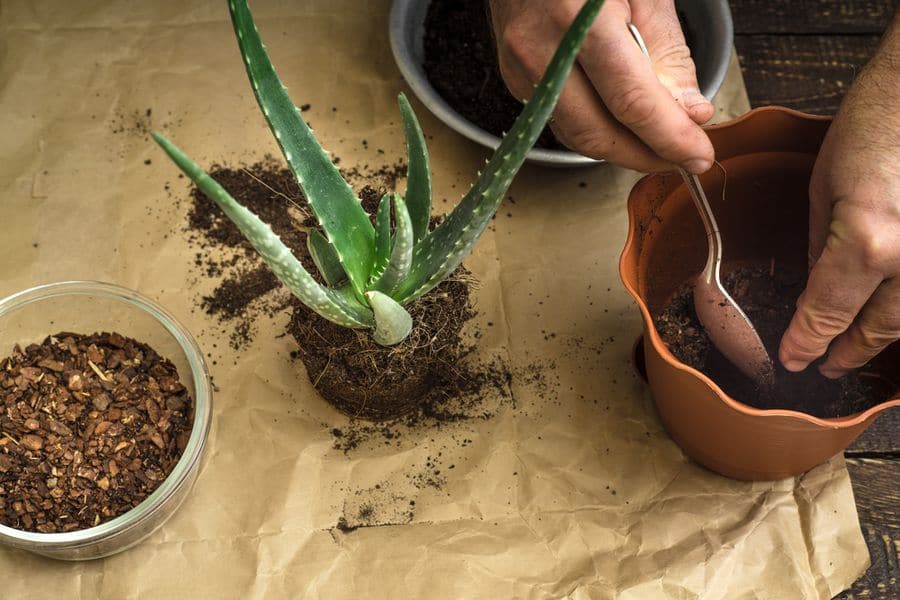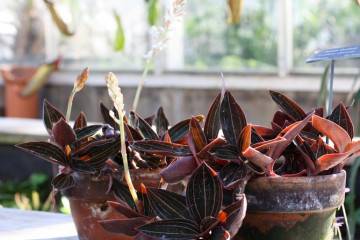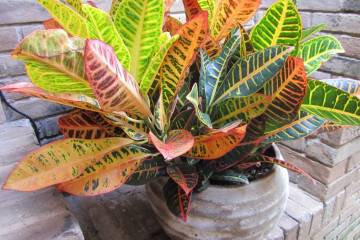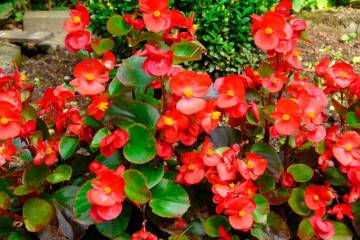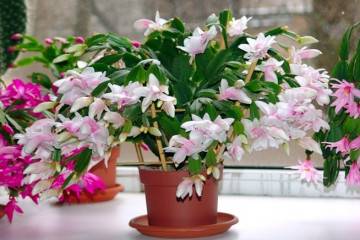Aloe vera diseases: causes of diseases and their treatment options
Content:
Aloe, or agave, is an ornamental deciduous plant grown at home. However, the plant is primarily grown for its beneficial medicinal properties. Aloe leaf juice is used to prepare face and hair masks. But sometimes precious leaf plates begin to change their natural color, pests appear on them, the plant begins to wither, fade and turn yellow. The owners are perplexed: "what makes the aloe turn yellow, what should I do?" It is important to understand why the leaves of aloe turn yellow and other diseases appear, and to take the correct treatment.
Common diseases of aloe
If you do not take any action, the problem can be triggered. Some diseases are very serious and infect the entire bush in a short time. In such cases, the agave dies.
Dry tips
The soft and fleshy leaves of aloe can dry out around the edges, and if left untreated, dry out altogether. If the edges of the leaf plates have begun to dry out, it is necessary to check the bush for cobwebs. The appearance of a spider mite is the main answer to the question of why aloe leaves dry.
Spots on the leaves
The spots usually appear locally, have a brown or black tint. Their size does not exceed 3 cm in diameter. The stain may appear due to hypothermia of the root system or stagnation of moisture in the soil. Cold, hard water is another cause of black spots.
Yellowing of leaves
One of the most common problems encountered when growing aloe is yellowing of the leaf blades. The leaf may turn yellow in whole or locally. Sometimes before this, at first, the flower gives some signs of a problem: it begins to fade, the affected leaf becomes white. Why do aloe leaves turn yellow? For many reasons: from lack of moisture, excessive lighting, high temperatures and lack of iron in the ground.
Withers
The plant begins to wither from the ends of the leaves, they soften and lose their firmness and elasticity. Despite the seeming frivolity of the problem, the lethargic appearance of the bush is the first sign that the agave is beginning to die. Since the problem may be an infection with an infectious disease, which first affects the roots and does not particularly manifest itself externally.
Leaves curl up
Leaves can curl and curl both in summer and in winter. In summer, during the hot dry period, there is a lack of moisture, which is why the problem arises. In winter, due to heating, the humidity of the room air drops sharply, which the succulent leaves of the agave cannot stand. Therefore, it is worth monitoring watering and humidity all year round.
In addition to the above, other problems may appear.
- Why do aloe leaves turn red. The leaf plates take on a red tint at the base on the upper side of the leaf. Redness is the most harmless problem, it will disappear as soon as the pot is moved to a more shaded place.
- Why does aloe have thin leaves? In addition to thinning, they can turn pale and stunted. A cramped pot and a lack of moisture are the main reasons for this problem.
- Why do aloe leaf tips turn brown? At first, they may darken slightly, then the leaves become soft to the touch, and the ends acquire a brown tint. This indicates hypothermia of the bush.
The main causes of diseases
Aloe vera diseases appear for various reasons, and this is a fairly common problem in home floriculture. Mostly diseases occur due to improper care of a houseplant. No matter how demanding the flower is in care, you always need to provide it with the necessary attention, carry out all the necessary procedures on time.
The main causes of the appearance of diseases in aloe:
- no transplants, the root system grows, and the pot becomes cramped;
- excessive abundant watering;
- low air humidity in the room where the flower pot is located;
- high temperature;
- finding aloe for a long time in direct sunlight;
- lack or lack of fertilizing, improperly selected composition of fertilizers;
- finding a flower for a long time in the same place and with one side to the light;
- sudden changes in room temperature;
- cold drafts or complete lack of air ventilation in the room;
- hypothermia of the bush and its roots;
- the presence of damage to the root system;
- the appearance of pests.
Types of parasites
Spider mites can provoke yellowing of the leaves. The appearance of these parasites can be recognized by a thin cobweb on the aerial part of the bush.
Another enemy of the agave is nematodes, which are attracted by the succulent leaf plates and stems of the agave. Visually, signs of their appearance cannot be found, first of all, the root system of the bush suffers.
Mealy worms are visible to the naked eye. They are oval-shaped white and pale pink insects that secrete white mucus. A white bloom appears on the leaves, which is harmful to the plant.
Methods of dealing with them
To prevent the appearance of problems in growing aloe, it is first of all important to provide the plant with proper and timely care, as well as create favorable conditions. First of all, you need to find out what is the reason for the problem with the agave.
At the initial stages of the development of diseases, aloe can be cured without the use of drugs. Solution to the problem depending on the symptoms:
- if the bush begins to wither and stops growing, it is urgent to transplant and fertilize;
- leaf plates locally begin to darken and lose their natural saturated green color, which means that it is necessary to reduce the frequency and abundance of watering and transfer the flower to a warm place;
- leaf plates twisted and dried at the edges can be saved by increasing the humidity level in the room by spraying;
- withered, yellowed and starting to dry ages must be removed from illuminated places and increased watering.
After each watering, be sure to loosen the soil in the pot. It is the stagnation of moisture in the soil that is one of the most important reasons for the appearance of fungi and mold, which are very difficult to deal with. It is imperative to monitor the quality of irrigation.
Folk remedies
From powdery mildew and spider mites in the early stages, showers under warm water and rinsing the leaves with soapy water help.In general, the washing of aloe leaf plates should be carried out constantly, as a prophylaxis against diseases. Dust not only accumulates harmful microorganisms on the leaf plates, but also spoils the appearance of the agave.
Aloe leaves turn yellow, what to do in such a situation? It is necessary to spray and process the soil with a solution of ferrous sulfate twice in the first 2-3 weeks. Then repeat the procedure every week until the bush regains its natural color.
From mold and fungi, the soil is treated with a solution of potassium permanganate. This method is a disinfectant and kills pathogens in the ground. If the problem is started, and the bush cannot be saved with potassium permanganate alone, you need to transplant the bush into new soil and a pot. Before planting, it is necessary to treat the root system with a weak solution of potassium permanganate and remove the areas that have begun to rot.
Chemical substances
It is recommended to treat the agave with special chemicals. Fungicides work well against infections, mold and fungi. It is necessary to choose a medicine specifically for deciduous plants. Bordeaux liquid is effective against yellowing of leaves.
Insecticides tekta, vedat, fufanon, intavir save from pests. From the spider mite, acaricides are used that can destroy the pest and promote healing of the affected areas of the plant.
Aloe is an indispensable helper for every housewife. It is appreciated not only for its decorative effect, but also for its useful medicinal properties. Therefore, it is doubly unpleasant when aloe turns yellow and becomes ill. It is not difficult to achieve healthy and active growth of the agave, the main thing is to carry out the necessary procedures regularly and correctly.



